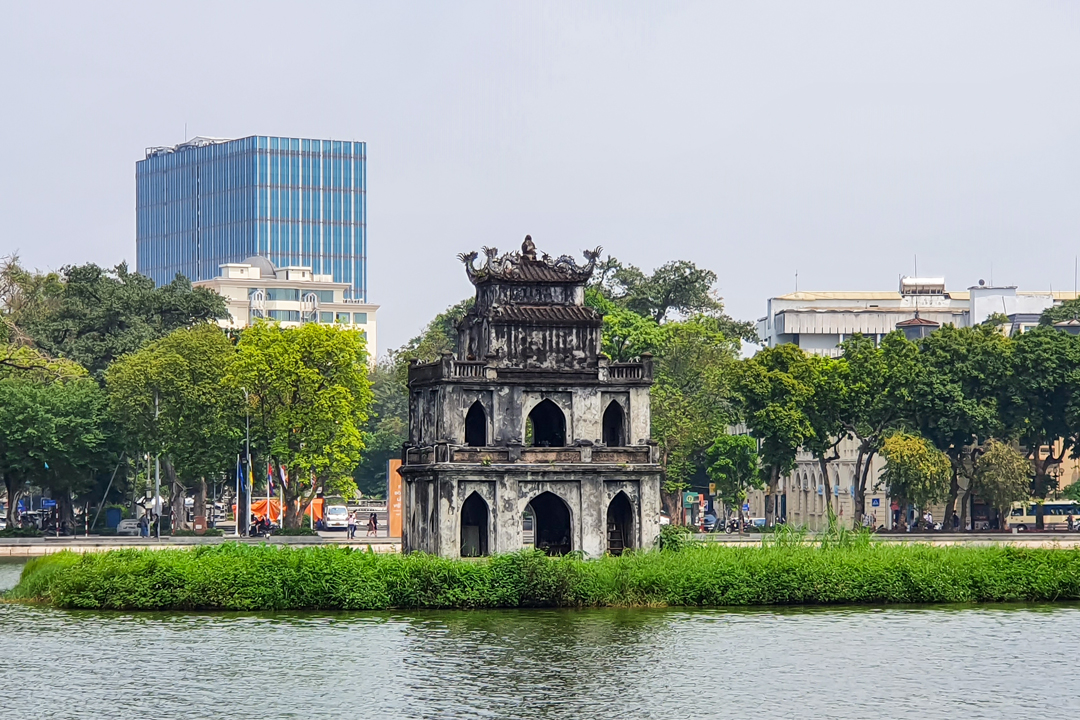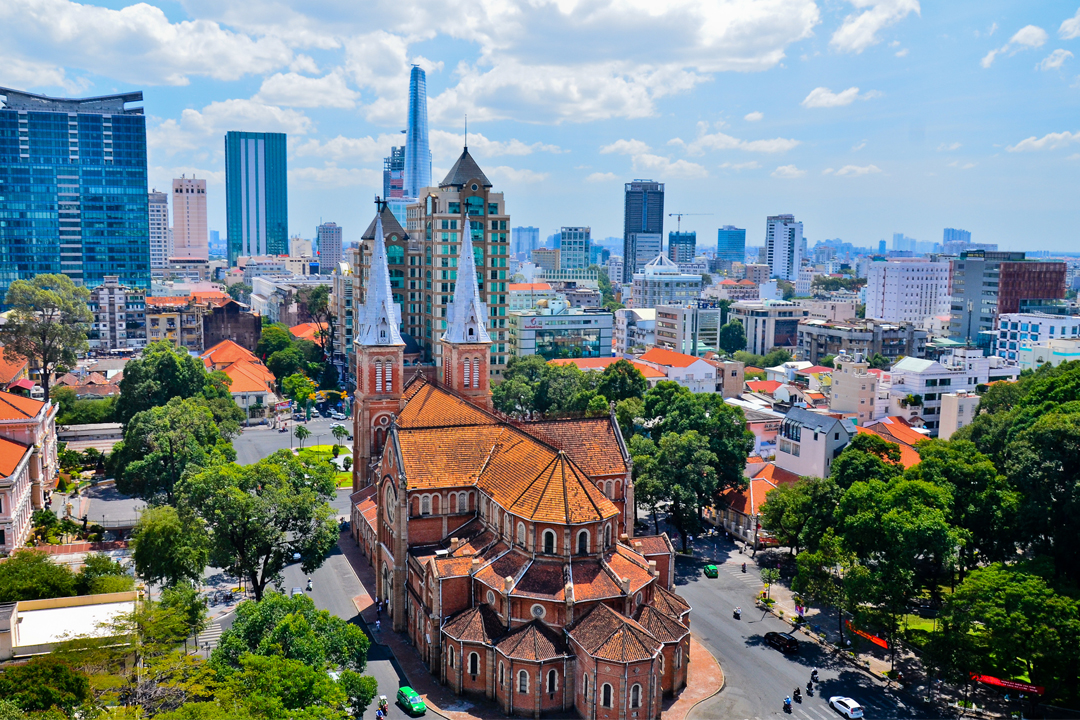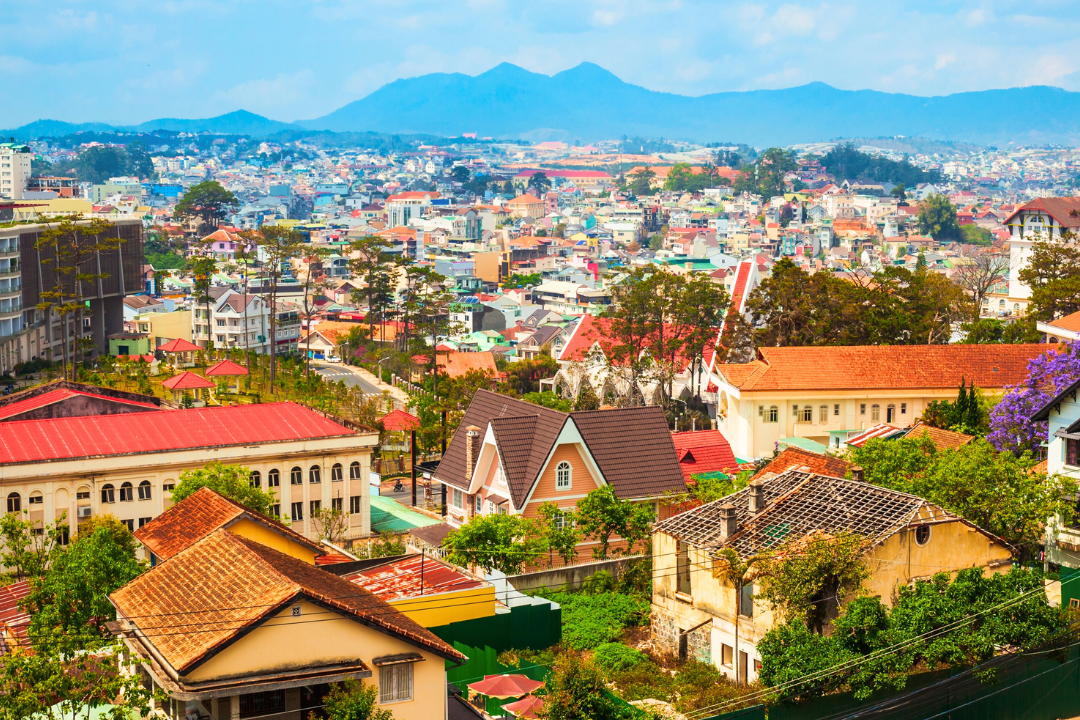Jun - 26 - 2025
The Vietnam Museum of Revolution is more than just a repository of artifacts. It's a captivating journey through the resilient spirit and tumultuous history that have shaped modern Vietnam. Located in the heart of Hanoi, this compelling attraction invites tourists to delve deep into pivotal moments that defined an era, offering insights that resonate beyond borders. For travelers seeking to broaden their understanding of Vietnam's vibrant past, the museum stands as an indispensable stop.
Introduction to the Vietnam Museum of Revolution
The Vietnam Museum of Revolution stands as a significant cultural institution preserving the nation's revolutionary history. Located in the heart of Hanoi, this museum showcases Vietnam's struggle for independence through an impressive collection of artifacts, documents, and photographs spanning multiple historical periods. Tourists seeking to understand Vietnam's complex past will find this museum an essential stop during their Hanoi exploration.
Where is the Vietnam Museum of Revolution?
Vietnam Museum of Revolution is centrally located at 25 Tong Dan Street in Hanoi's bustling Hoan Kiem District. Its prime position makes it easily accessible for travelers exploring the city's historical center. The museum sits just a block away from the magnificent Hanoi Opera House, surrounded by many of the capital's most significant landmarks. This convenient location allows you to combine the museum with other nearby attractions for a comprehensive cultural experience.
The museum's strategic placement in Hanoi's French Quarter adds to its historical significance and architectural context. Founded with a crucial mission, the institution diligently collects, preserves, and presents artifacts from Vietnam's anti-imperial and anti-feudal revolutionary movements. The extensive collection honors countless national heroes who fought for Vietnam's independence and sovereignty throughout its turbulent history. Within its walls, you can trace the development of revolutionary ideals that shaped modern Vietnam.
Entrance fees and opening hours of the Vietnam Museum of Revolution
The Vietnam Museum of Revolution maintains an accessible pricing structure to encourage visitation from diverse audiences.
- Adult visitors: 40,000 VND (approximately $1.70) per person.
- Students receive a 50% discount of 20,000 VND per person with valid identification.
- Young learners at the school level pay just 10,000 VND per person, making educational visits affordable for school groups.
The museum demonstrates inclusivity by offering free entry to children under six years old and individuals with severe disabilities. Operating hours run daily from 8:00 AM to 12:00 AM and resume from 1:30 PM until 5:00 PM. You should note the museum remains open every day except Monday of every week. This midday closure allows staff to maintain the collections and prepare exhibitions while providing tourists with flexibility in planning their visit.
Tips for visiting:
- Allow 1-2 hours to properly explore the museum's extensive collections
- Visit in the morning hours to avoid afternoon crowds
- Bring small denominations of Vietnamese dong for the entrance fee
- Consider hiring an English-speaking guide for deeper historical context
- Photography is permitted, but without flash in most exhibition areas
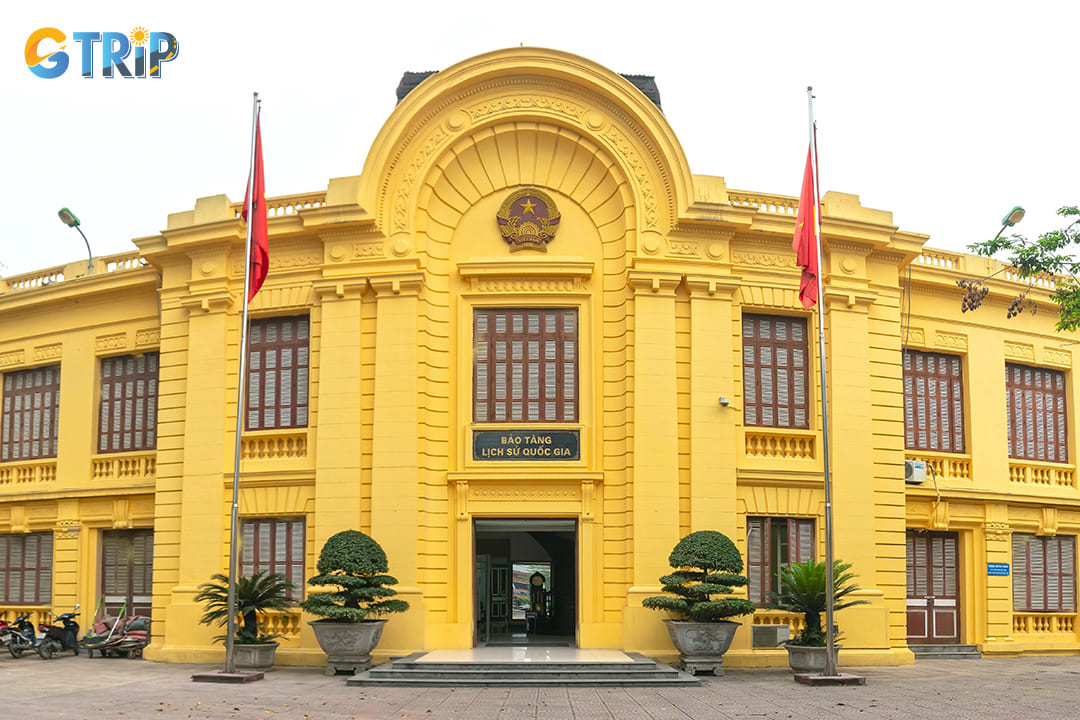
The Vietnam Museum of Revolution’s strategic placement in Hanoi's French Quarter adds to its historical significance and architectural context
History of the Vietnam Museum of Revolution
The Vietnam Museum of Revolution stands as a testament to Vietnam's revolutionary journey and national pride. Its rich history spans over six decades, evolving from a modest collection to a comprehensive institution that chronicles the nation's struggle for independence and sovereignty.
The museum's story began in 1954 when the Vietnamese government initiated efforts to gather revolutionary artifacts. Collections expanded rapidly through generous contributions from Communist Party members, ordinary citizens, and international supporters. These initial artifacts formed the foundation of what would become an extensive historical repository. On January 6, 1959, the Vietnam Museum of Revolution officially opened its doors to the public. This milestone marked it as the first museum established by Vietnamese people, specifically dedicated to preserving and honoring the country's revolutionary legacy.
The museum found its home in a colonial-era building at 25 Tong Dan Street in Hanoi. This elegant structure, built in 1917, previously housed the Indochina Department of Trade during French colonial rule. The repurposing of this colonial building into a revolutionary museum carried powerful symbolic significance. Throughout the 1960s and 1970s, the museum significantly expanded its scope. Exhibits were developed to comprehensively cover Vietnam's revolutionary history starting from 1858. New displays documented resistance against French colonialism, the American War, and the eventual national reunification.
The late 20th century witnessed remarkable growth in the museum's collection. From approximately 10,000 artifacts, the holdings more than quadrupled to over 40,000 items. Each piece reflected different aspects of Vietnam's evolving revolutionary narrative and national identity. By 2010, the museum had amassed an impressive collection exceeding 80,000 objects. These artifacts represented revolutionary activities, prominent leaders, mass movements, and national defense efforts throughout Vietnam's struggle for independence.
Key artifacts in the collection included:
- Personal items belonging to Ho Chi Minh and other revolutionary leaders
- Weapons used during various resistance campaigns
- Underground propaganda materials and communication equipment
- Photographs documenting pivotal historical moments
- Documents including declarations, treaties, and correspondence
A significant transformation occurred on September 26, 2011, when the Vietnam Museum of Revolution merged with the Vietnam National Museum of History. This consolidation created the unified Vietnam National Museum of History, bringing together revolutionary and broader historical narratives under one institution.
Today, the merged institution stands as a major cultural and educational landmark in Hanoi. The museum features over 2,500 carefully selected artifacts across its permanent and temporary exhibitions. These displays comprehensively showcase Vietnam's history from prehistoric times through modern revolutionary eras. The museum remains dedicated to its educational mission, preserving revolutionary heritage while adapting to contemporary museum practices. It serves both as a guardian of national memory and an educational resource for younger generations of Vietnamese and international visitors.

The Vietnam Museum of Revolution stands as a testament to Vietnam's revolutionary journey and national pride
The architecture of the Vietnam Museum of Revolution
The Vietnam Museum of Revolution is housed in a magnificent French colonial-style building that captivates tourists with its historical charm. Constructed in 1917 during the French occupation, this architectural gem stands as a testament to Vietnam's complex past. The building itself becomes the first exhibit, telling a story through its walls before you even step inside.
The museum's distinctive yellow facade immediately catches the eye among Hanoi's urban landscape. This warm ochre color represents a hallmark of French colonial architecture throughout Vietnam's capital city. Large windows with decorative moldings punctuate the exterior, allowing natural light to illuminate the treasures within. The grand entrance features elegant columns that frame the doorway, welcoming tourists into this historical sanctuary.
Inside, wide tiled corridors create a sense of spaciousness while keeping the interior cool in Hanoi's tropical climate. Tourists often pause to admire the intricate ceiling work and polished wooden details throughout the building. The elegant interior combines classic French design elements with institutional aesthetics reminiscent of mid-20th-century government buildings. This architectural fusion reflects Vietnam's own cultural journey through colonization and independence.
The museum's structural design brilliantly serves its educational purpose through:
- 29 carefully designed exhibition rooms spread across approximately 1,500 square meters
- Spacious galleries with high ceilings that accommodate large displays and artifacts
- A chronological layout that naturally guides tourists through Vietnamese revolutionary history
- Strategic natural lighting that highlights key exhibits while protecting sensitive documents
- Wide corridors that facilitate tourist flow even during peak tourism seasons
- Acoustic considerations that create contemplative spaces for reflecting on historical events
The building's layout creates an intuitive journey through Vietnam's revolutionary timeline. Beginning from the resistance against French colonization in 1858, tourists move through interconnected galleries that chronicle the independence movement, wartime struggles, and post-war development. The architectural flow guides tourists naturally through this historical narrative, enhancing their understanding of Vietnam's revolutionary path.
Recent preservation efforts have maintained the building's historical integrity while implementing modern museum standards. Climate control systems protect delicate artifacts from Hanoi's humidity, while subtle lighting enhancements illuminate displays without damaging sensitive materials. This balance between preservation and functionality ensures the museum will continue educating generations to come about Vietnam's revolutionary history.
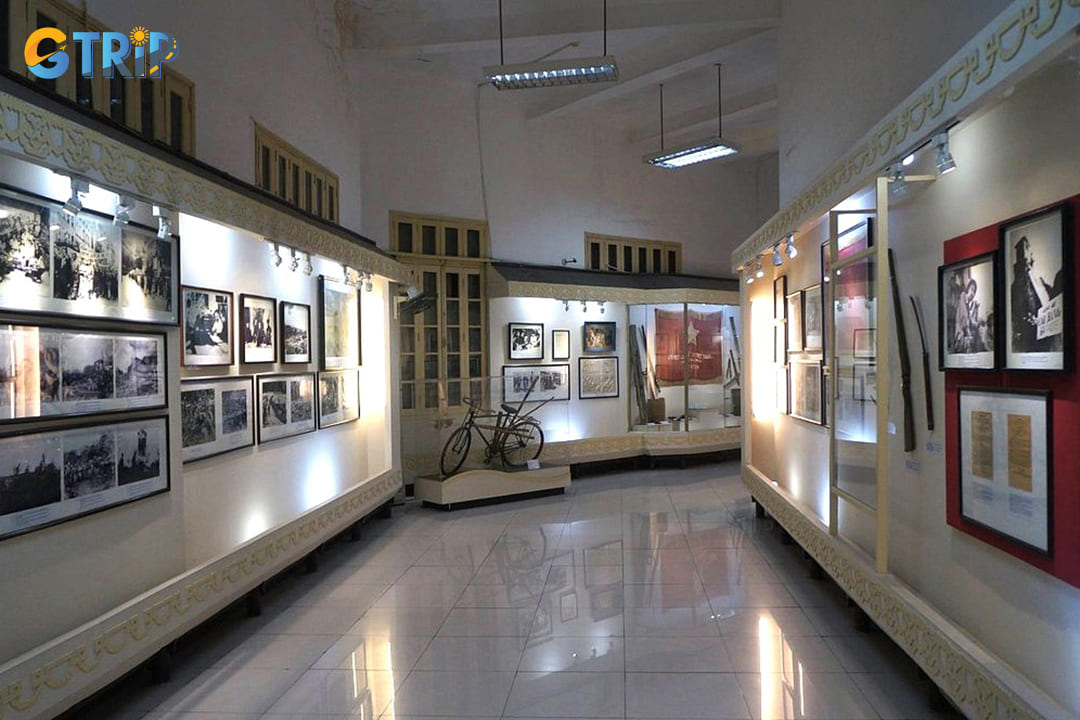
The Vietnam Museum of Revolution is housed in a magnificent French colonial-style building that captivates tourists with its historical charm
Things to do at the Vietnam Museum of Revolution
The Vietnam Museum of Revolution offers tourists an immersive journey through Vietnam's struggle for independence and national development. The museum provides numerous engaging activities that bring Vietnam's revolutionary history to life. Here's what you can experience during your visit.
View authentic revolutionary artifacts and memorabilia
The museum houses an impressive collection of over 200,000 historical exhibits that document Vietnam's revolutionary journey. Each artifact tells a compelling story about the nation's fight for independence and sovereignty. You can examine an extensive array of weapons, flags, propaganda posters, and personal items that belonged to revolutionaries during different periods. The collection includes powerful visual elements that capture the spirit of resistance throughout Vietnam's history.
Life-like statues and personal memorabilia of key revolutionary figures such as Ho Chi Minh and Tran Phu create a connection to these historical personalities. These displays help you understand the human aspects behind Vietnam's revolutionary movements. Original documents, photographs, and periodicals provide authentic glimpses into Vietnam's past struggles and triumphs. These primary sources offer researchers and history enthusiasts valuable insights into the country's revolutionary history.
Unique artifacts like a 1920s jar used to store secret revolutionary documents and Vietnam's first sewing machine highlight everyday objects repurposed for the resistance. These items demonstrate the ingenuity of Vietnamese revolutionaries operating under challenging conditions.
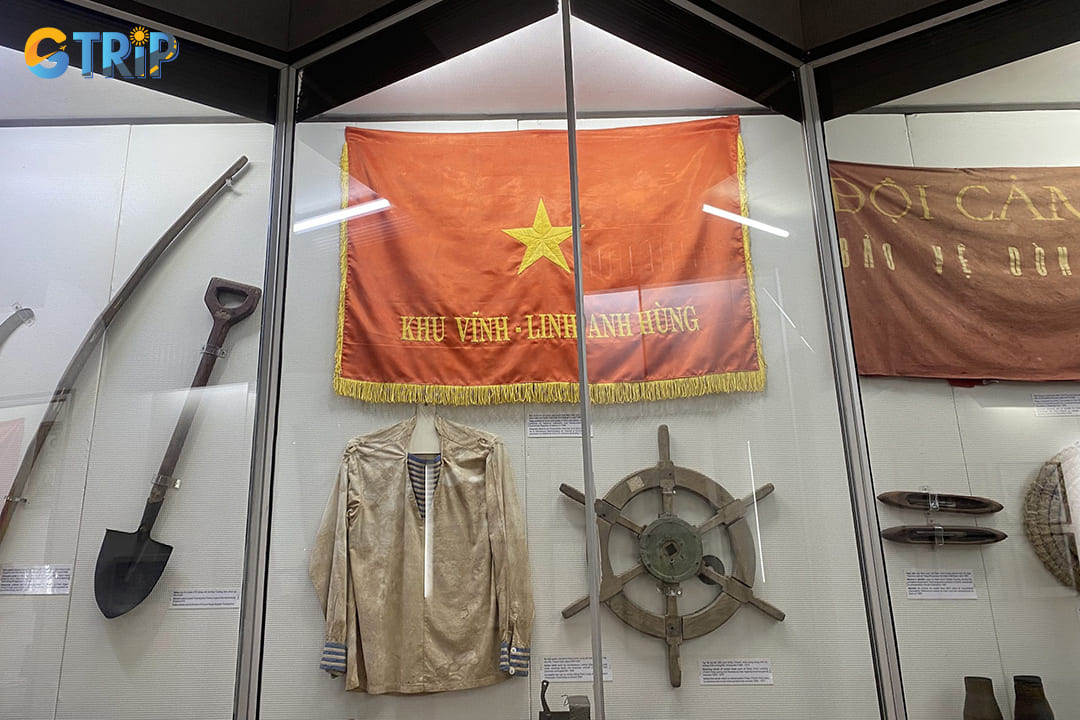
The museum houses an impressive collection of over 200,000 historical exhibits that document Vietnam's revolutionary journey
Explore permanent exhibitions
The museum's comprehensive permanent exhibition system spans 30 meticulously organized galleries that chronologically present Vietnam's history from the mid-19th century to modern times. Each gallery contains carefully curated artifacts that illustrate critical moments in Vietnam's revolutionary journey.
First Part (1858 - 1945) chronicles the Vietnamese people's struggle against French colonial rule and the birth of revolutionary movements. You can see evidence of early resistance efforts and learn about the formation of the Communist Party of Vietnam. The Second Part (1945 - 1975) documents Vietnam's revolutionary wars against foreign powers, including the First Indochina War and the Vietnam War. This section features powerful displays of military equipment, strategic maps, and personal accounts from this turbulent period.
The Third Part (1975 to present) showcases Vietnam's post-reunification development and nation-building efforts. Exhibits highlight the country's transition and progress toward establishing a socialist, democratic society after years of conflict. The special collection in Rooms 28 and 29 displays approximately 300 original gifts presented to President Ho Chi Minh and the Communist Party. These items symbolize international solidarity and domestic support for Vietnam's revolutionary cause.
Throughout the museum, you can examine more than 2,100 artifacts, including weapons, shackles, blood-stained clothing, and everyday wartime items. These objects, from simple rice containers to bicycles, illustrate how ordinary life continued during extraordinary circumstances.

The museum's comprehensive permanent exhibition system spans 30 meticulously organized galleries that chronologically present Vietnam's history
Attend temporary exhibitions
The museum regularly hosts specialized temporary exhibitions that delve into specific historical themes or commemorate significant anniversaries. These rotating displays provide fresh perspectives on Vietnam's revolutionary history.
"The Spirit of Independence: Revolutionary Artifacts from the Early 20th Century" exemplifies the quality of temporary exhibitions, showcasing rare documents and personal effects of early revolutionaries. This exhibition brought to light lesser-known aspects of Vietnam's early independence movements.
"Vietnam and the World: International Solidarity in the Revolutionary Struggle" highlighted the global context of Vietnam's revolution through gifts and support documents from international allies. Tourists gained insights into how international solidarity influenced Vietnam's revolutionary outcomes.
The museum actively updates information about upcoming exhibitions on its official website and social media platforms. These announcements help tourists plan their trips to coincide with specific exhibitions that match their historical interests.
Temporary exhibitions often coincide with important historical anniversaries or showcase newly acquired artifacts from significant periods in Vietnam's history. They frequently result from collaborations with other museums, creating unique educational opportunities not available during regular visits.

The museum regularly hosts specialized temporary exhibitions that delve into specific historical themes or commemorate significant anniversaries
Take pictures at the Vietnam Museum of Revolution
Photography enthusiasts will find numerous captivating subjects throughout the museum's impressive historical displays and architectural features. The museum generally allows non-flash photography in most exhibition areas for personal use. The grand entrance hall with its revolutionary symbolism and impressive design elements provides an excellent backdrop for memorable photographs. Many tourists capture images here to document their educational journey through Vietnam's history.
Display cases featuring delicate artifacts like handwritten letters, flags, and medals require careful photography without flash. These close-up shots of historical items often become treasured reminders of Vietnam's remarkable revolutionary history. When photographing the museum, you should be mindful of any posted restrictions in special exhibition areas. Some temporary exhibitions or sensitive artifacts may have specific photography guidelines to protect valuable historical materials.
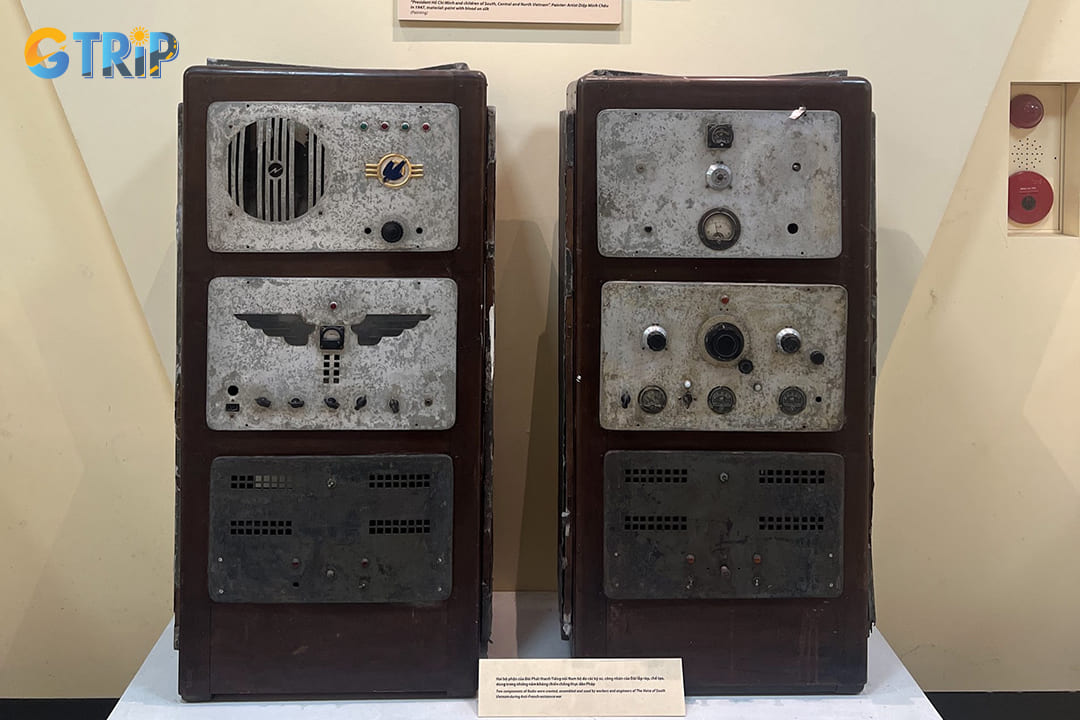
Photography enthusiasts will find numerous captivating subjects throughout the museum's impressive historical displays and architectural features
How to get to the Vietnam Museum of Revolution?
The Vietnam Museum of Revolution enjoys a prime location in Hanoi's central district, making it accessible through various transportation options. Located at 25 Tong Dan Street in the Hoan Kiem District, tourists have multiple convenient ways to reach this historical treasure.
By bus
Hanoi's extensive bus network provides an affordable and convenient way to reach the Vietnam Museum of Revolution. The main bus routes serving the museum area include numbers 04, 34, 55A, 55B, and 09ACT. Bus 04 runs between Long Bien and Giap Bat bus stations, stopping near Tong Dan Street.
Bus fares in Hanoi are remarkably budget-friendly, typically ranging from 7,000 to 9,000 VND (approximately $0.30 to $0.40) per journey. Most buses operate from early morning (around 5:00 AM) until late evening (about 9:00 PM). Each bus displays its route number prominently on the front and sides, making it easy to identify for tourists.
When riding buses in Hanoi, be prepared for potentially crowded conditions during rush hours (7:00 - 9:00 AM and 5:00 - 7:00 PM). Many tourists find the Hanoi Bus Map application helpful for navigating the network and tracking bus arrival times. Remember to have small denominations of Vietnamese dong ready, as drivers rarely provide change for large bills.
By taxi or ride-hailing apps
Taxis and ride-hailing services offer the most convenient door-to-door transportation to the Vietnam Museum of Revolution. Traditional taxi companies like Mai Linh, Vinasun, and Group operate throughout Hanoi with recognizable green and white vehicles. Ride-hailing apps, including Grab and Be, have become increasingly popular alternatives with transparent pricing.
Taxi fares generally range from 11,000 VND to 20,000 VND per kilometer, with a starting fare of around 10,000 - 12,000 VND. Most taxis accept cash only, so ensure you have Vietnamese dong available before your journey. The museum's central location means travel times rarely exceed 20-30 minutes from most Hanoi hotels.
By motorbike or bicycle rental
Exploring Hanoi like a local on two wheels offers flexibility and an authentic experience when visiting the Vietnam Museum of Revolution. Motorbikes represent Hanoi's most popular transportation method, with rental shops clustered throughout tourist areas. Most hotels and hostels can arrange rentals if you prefer convenience.
Motorbike rentals typically cost between 150,000 VND to 200,000 VND (approximately $5 to $8) per day for standard models. Semi-automatic bikes like Honda Wave cost around 150,000 VND, while automatic scooters command 180,000-220,000 VND daily. Most rental shops require either a passport deposit or a cash deposit of approximately $100.
For environmentally conscious travelers, bicycle rentals present an excellent alternative for navigating Hanoi's central districts. Daily bicycle rentals average 50,000 - 80,000 VND ($2-3.50), with many shops offering hourly rates. The museum provides bicycle parking, making this a practical option for visitors staying within a few kilometers.
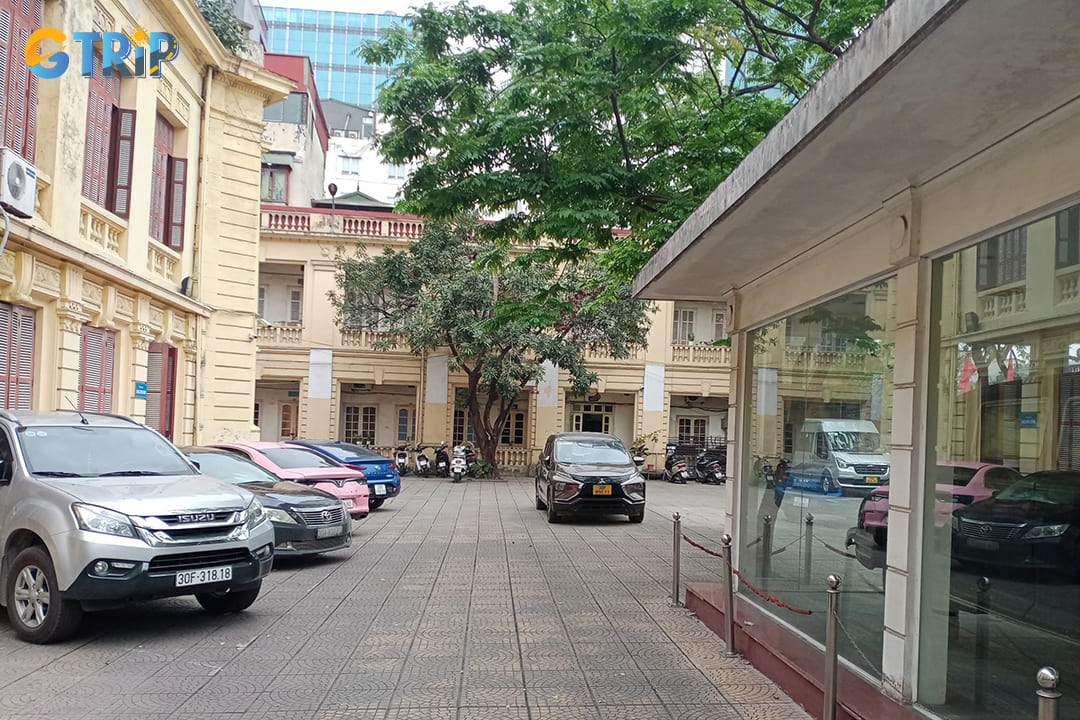
The Vietnam Museum of Revolution enjoys a prime location in Hanoi's central district, making it accessible through various transportation options
Nearby attractions from the Vietnam Museum of Revolution
While exploring the Vietnam Museum of Revolution, you can easily extend your cultural journey by visiting several fascinating attractions just steps away. The museum sits in a prime location in Hanoi's historic district, surrounded by significant landmarks that complement the revolutionary narrative. Here are three must-visit attractions within walking distance that will enrich your understanding of Vietnam's history and culture.
Vietnam National Museum of History (200m)
Vietnam National Museum of History stands as a magnificent historical treasure trove just a short 200-meter stroll from the Museum of Revolution. Housed in a striking French colonial building constructed in 1932, this museum showcases Vietnam's rich journey from prehistoric times to the modern era. The collection spans over 200,000 artifacts, including ancient ceramics, stone tools, and bronze sculptures that date back thousands of years.
You can marvel at the Dong Son bronze drums, which represent the pinnacle of ancient Vietnamese craftsmanship. The museum's exhibits are thoughtfully arranged in chronological order, allowing guests to trace Vietnam's development through the ages. Notable displays include artifacts from the Champa Kingdom, imperial items from various Vietnamese dynasties, and archaeological discoveries from recent decades. Photography is permitted in most sections, allowing you to capture memories of your educational journey through Vietnam's fascinating past.
Key exhibits to see:
- Dong Son bronze drums (1000 BC - 1 AD)
- Ancient ceramics collection spanning multiple dynasties
- Traditional imperial costumes from the Nguyen Dynasty
- Archaeological finds from excavation sites across Vietnam
- Ancient stone and bronze weaponry

You can marvel at the Dong Son bronze drums, which represent the pinnacle of ancient Vietnamese craftsmanship
Hanoi Opera House (240m)
The magnificent Hanoi Opera House stands as an architectural masterpiece just 240 meters from the Vietnam Museum of Revolution. Completed in 1911 and modeled after the Palais Garnier in Paris, this stunning building combines French colonial elegance with Vietnamese artistic elements. Its yellow facade, ornate balconies, and grand entrance create an impressive sight that transports tourists to Vietnam's French colonial period.
The interior features even more breathtaking details, including crystal chandeliers, marble floors, and intricate woodwork throughout the performance hall. Today, the opera house hosts world-class performances ranging from traditional Vietnamese music to international operas, ballets, and symphony concerts. You can take guided tours during non-performance hours to learn about the building's fascinating history and architectural significance.
Geological Museum in Hanoi (300m)
The often-overlooked Geological Museum offers a fascinating scientific perspective on Vietnam's natural history just 300 meters from the Museum of Revolution. Established in 1952, this specialized museum houses an extensive collection of minerals, rocks, fossils, and geological maps of Vietnam. You can examine rare crystal formations and meteorite fragments that tell the story of Earth's formation.
The museum's displays are organized by geological periods, showcasing Vietnam's rich mineral resources and diverse landscapes. One highlight includes fossilized remains of ancient creatures that once inhabited the region millions of years ago. The collection's educational value extends beyond casual tourism, making it a favorite among science enthusiasts and students of natural history.
Top geological exhibits:
- Rare mineral specimens from mines across Vietnam
- Prehistoric fossils, including dinosaur remains
- Meteorite collection with specimens from various impacts
- Scale models of Vietnam's geological formations
- Interactive displays explaining tectonic activity in Southeast Asia
- Educational exhibits on Vietnam's mining history and natural resources
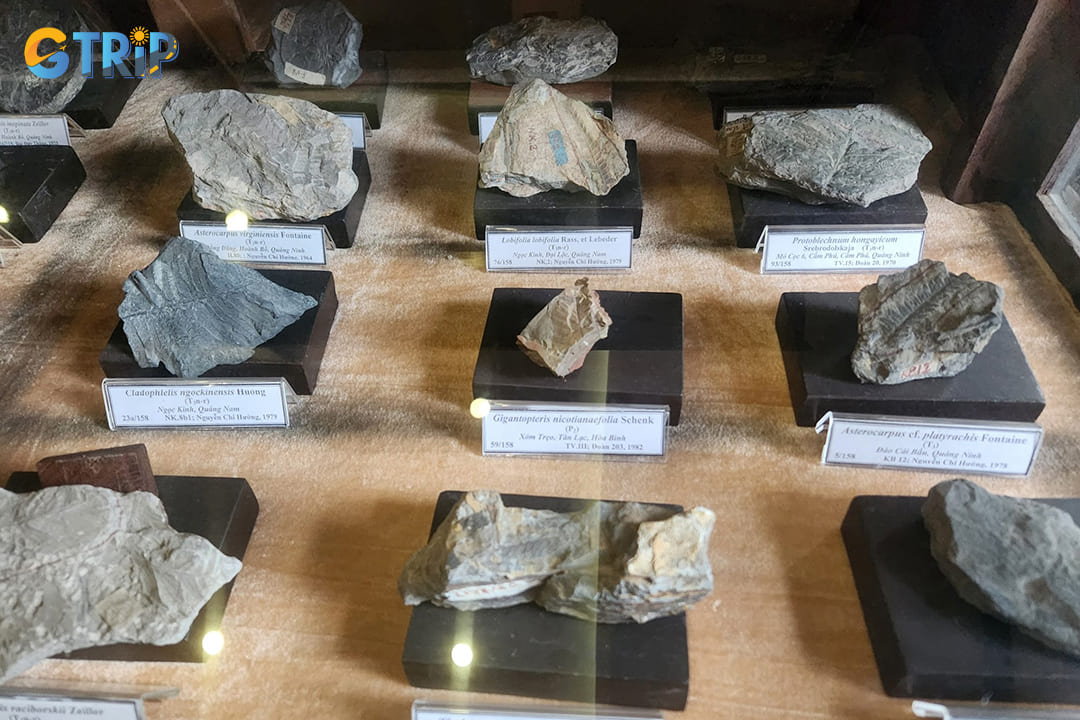
The museum's displays are organized by geological periods, showcasing Vietnam's rich mineral resources and diverse landscapes
Step into the Vietnam Museum of Revolution and uncover the powerful story of a nation’s fight for independence. Through vivid displays and carefully preserved artifacts, the museum offers an unforgettable look at Vietnam’s turbulent past. This experience deepens your understanding of the country's history and creates a meaningful connection to its enduring spirit and cultural pride. Each exhibit invites you to reflect, feel, and connect with the resilience of the Vietnamese people. Let this moment of discovery inspire you to explore even more corners of Vietnam, each with its own rich narrative. And as you continue your travels, may these experiences hape a broader appreciation for world cultures and spark your next adventure with GTrip by your side. You can consider booking Hanoi tours of GTrip - Vietnam Travel Agency to explore more deeply about this museum and other attractions.

